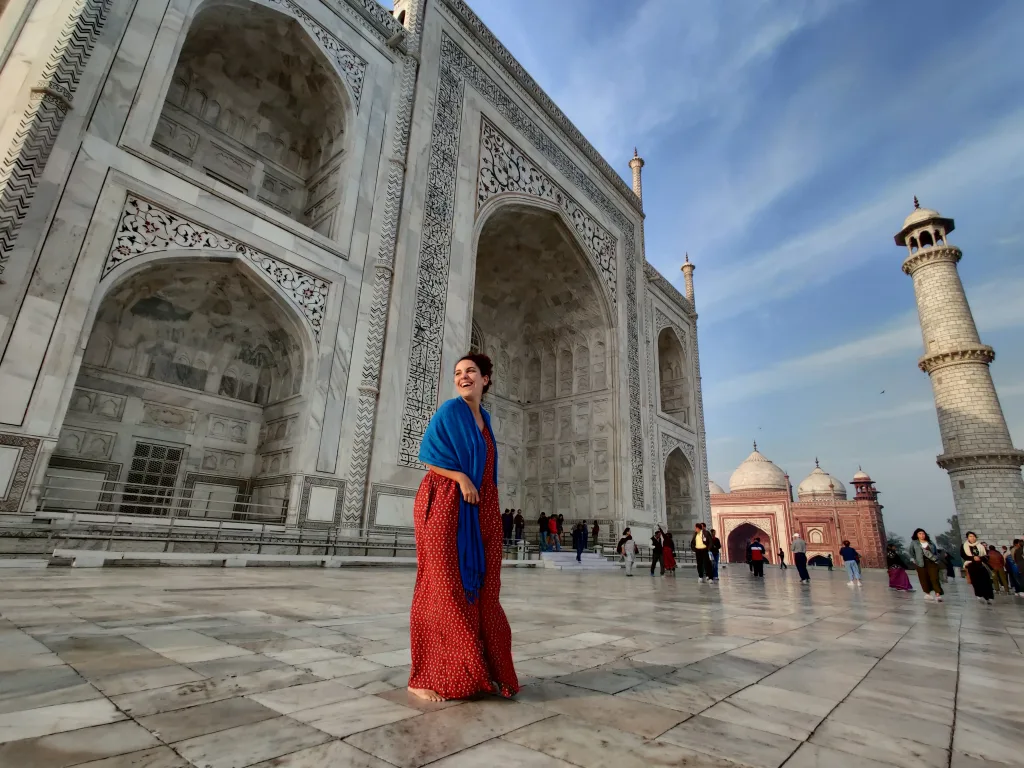India, an Asian country rich in history and culture, offers travelers unique treasures but requires preparation for an enriching experience.
Travelers should be ready for a significant cultural shock in India, where religious traditions and local customs hold a strong influence. Respecting and understanding these practices is crucial to avoid inadvertent offenses.
In 2024, India ranks among the best places to visit according to National Geographic, drawing travelers from all over the world. The true magic of a trip lies in the ability to appreciate and learn from cultural differences. India provides a striking contrast to Western daily life, enriching the experience of travelers seeking to broaden their horizons.

It is essential to demonstrate respect for local traditions and beliefs during your stay in India. Small gestures of courtesy can make a big difference when interacting with locals or participating in ceremonies and rituals. Before traveling, it’s advisable to familiarize yourself with practical aspects such as safety, health, and local infrastructure. Advance planning helps maximize the journey, minimize setbacks, and facilitate cultural immersion.
Exploring India is a transformative journey where every moment offers new perspectives and lessons. With proper preparation and respect, every visitor can deeply enjoy the unique richness this extraordinary country has to offer.
In India, cows are considered sacred animals, so it is crucial to treat them with respect. Avoid disturbing, chasing, or harming them in any way. Additionally, in some regions, consuming beef is strictly prohibited and can lead to severe penalties. Other animals also hold cultural and spiritual importance; for example, in certain places, even rats are revered. Respecting these animals is a way to honor local beliefs and traditions.
Although India is a country with a predominantly hot climate, cultural norms regarding clothing are very different from those in Western countries. Short outfits and low-cut tops, common in the West, are considered disrespectful. To adapt to local norms and show respect, opt for more conservative clothing that covers most of the body. In many places, it is recommended to wear clothing that covers your shoulders and knees.
For women, it is especially important to choose outfits that cover shoulders, knees, and ankles—not just to respect cultural norms but also to avoid attracting unwanted attention. In India, locals often request photos with foreigners, particularly those with visibly different appearances. These requests can become overwhelming and, in some cases, even unsafe. Investing in breathable and modest clothing helps ensure a more comfortable and respectful visit.
Indian cuisine is diverse and delicious, but it’s important to be cautious about what you eat. Consuming street food can be risky due to hygiene concerns. Always opt for recommended and well-rated dining establishments. Additionally, potable water may be contaminated; it is wise to drink bottled water and avoid ice in drinks.
India has distinct food practices reflecting both traditional culture and hygiene considerations. While cleanliness standards may differ from those in the West, using hands to prepare and eat food is a deeply rooted tradition. This practice is based on the belief that hands possess special energy, fostering a connection with the food. Visitors should exercise caution with food hygiene and choose venues that prioritize good sanitation to avoid health issues.
Using hands for eating is not only a cultural practice but also tied to the philosophy that eating is a spiritual experience. In many regions, food is handled with the right hand, considered pure, while the left hand is reserved for activities unrelated to eating. Familiarizing yourself with these customs can enrich your experience and help avoid missteps.
The practice of using hands to prepare and serve food is deeply embedded in Indian culture and is viewed as a form of connection with the meal. However, travelers should carefully choose where to eat and be cautious with street food. Opting for recommended and verified restaurants can reduce the risk of health problems.
India’s major cities are known for their crowds and intense traffic. Be prepared for chaotic traffic experiences and the constant presence of people in the streets. Plan your commutes in advance and be ready to handle urban hustle and bustle.
India is rich in traditions and religious practices. When visiting temples and sacred sites, follow etiquette guidelines, such as removing your shoes before entering and wearing appropriate clothing. Showing respect for local religious and cultural practices will contribute to a more enriching and harmonious experience.
When interacting with locals, especially in tourist areas, be aware that some may approach you for photos or conversation. While this is often a sign of curiosity and interest, it is important to stay safe and aware of your surroundings. Responding politely but cautiously can ensure a positive and secure experience.
By following these guidelines, you can enjoy your visit to India more comfortably and respectfully, making the most of the country’s rich and diverse culture.
When visiting temples, mosques, and tombs, it is crucial to adhere to local etiquette rules. This includes avoiding dances, inappropriate gestures, or any behavior that may be considered disrespectful. Although it is common to share photos and videos on social media, it is important to respect local restrictions. Photography is often prohibited in sacred places, and violating these rules can result in penalties. Always pay attention to signs and local laws and act discreetly to ensure a respectful and pleasant visit.
Before traveling, it is advisable to research cultural norms and local practices. This includes understanding dietary customs, rules for interacting in sacred places, and best practices for ensuring a safe and enriching experience. Investing time in preparation can make all the difference on your trip.
By following these tips, you can make the most of your visit to India, respecting local traditions and experiencing a culturally rich and rewarding journey.

